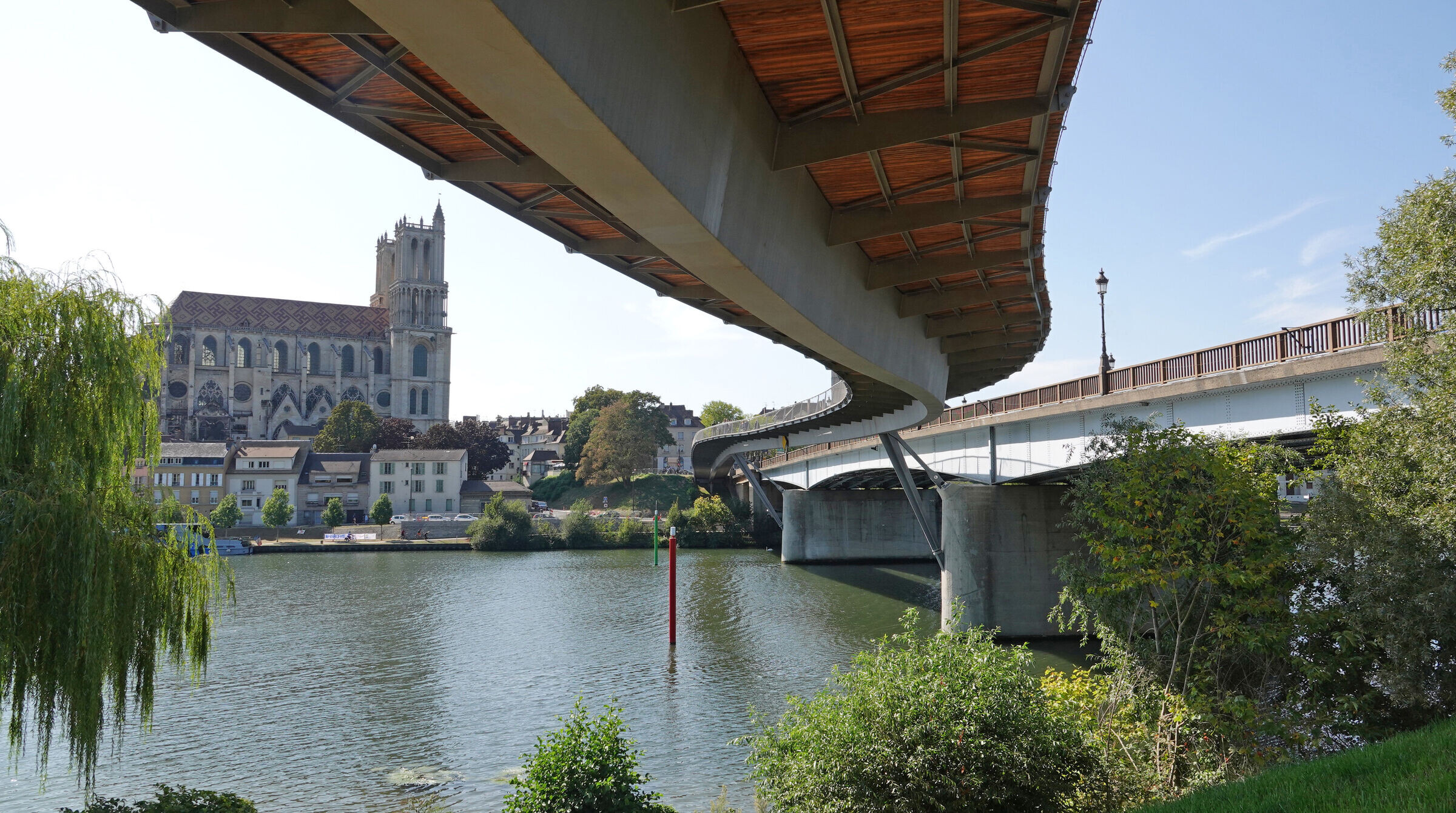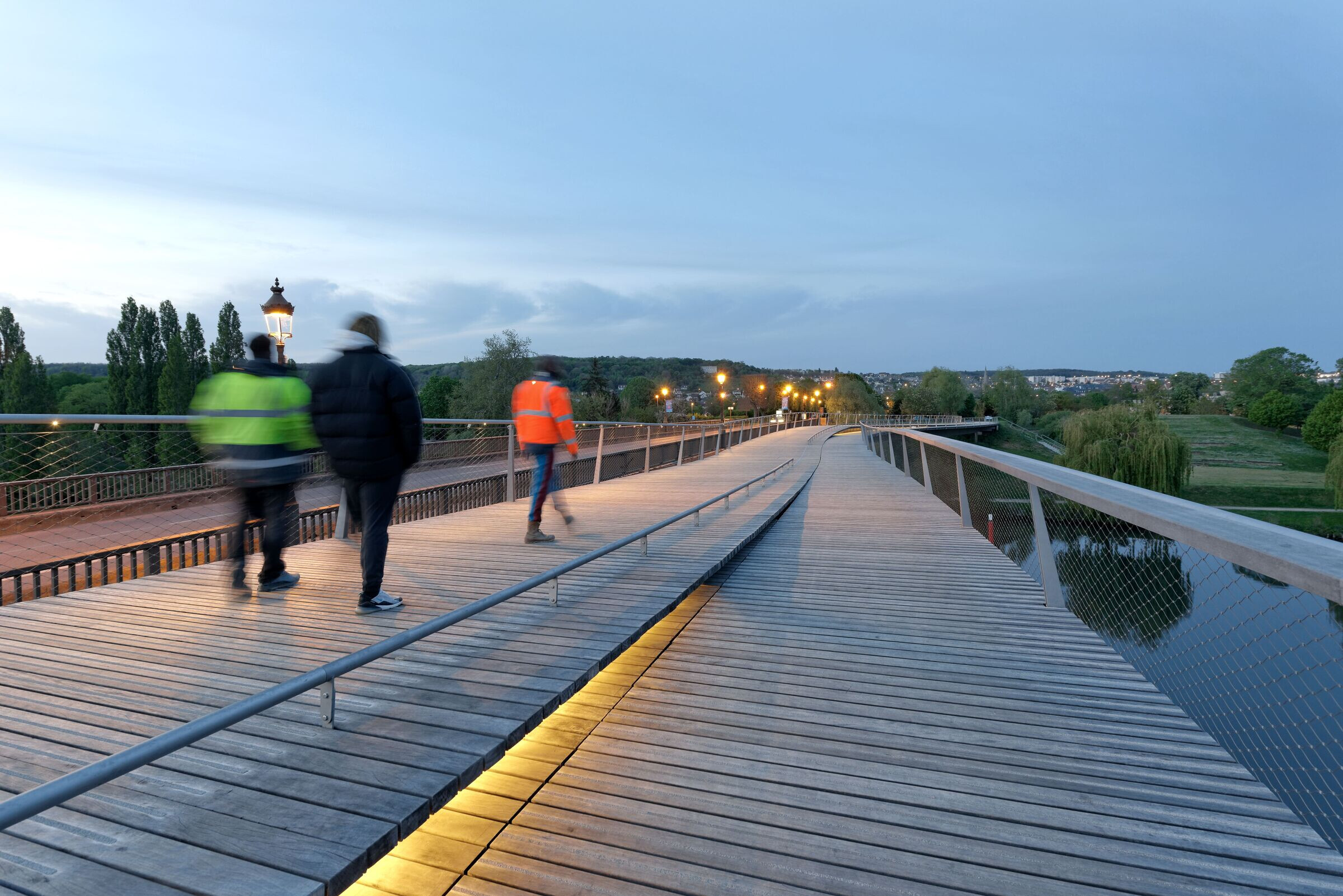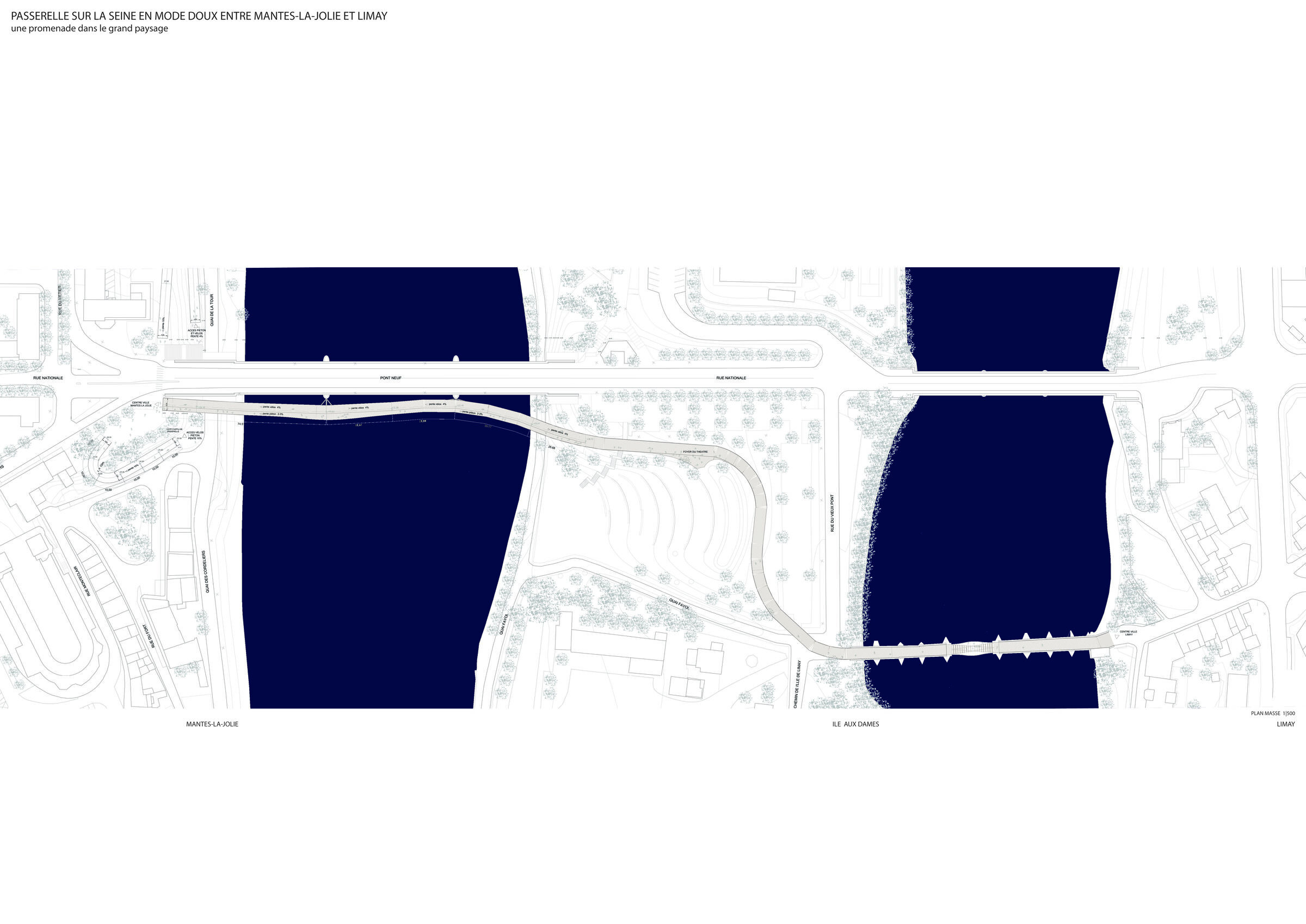Dietmar Feichtinger’s new soft mobility bridge over the Seine linking Mantes-la-Jolie and Limay is an invitation to embark on a veritable urban promenade. In the crook of one of the loops of the river that define the southern limit of the French Vexin, he has created a subtle staging for urban space and the natural landscape to meet. In the wooded shade of the hills that dominate the valley, between the high silhouette of the collegiate church of Notre-Dame and the streets of the ancient city on the north bank, the new pathway crosses two arms of the river, pausing only to rest on the wooded slope of the Ile aux Dames.

A double footbridge for a soft link
Almost imperceptible when one approaches the town from the riverbanks, the first crossing is based on an existing structure, the Pont Neuf, built in the 18th century following the destruction of the ramparts protecting Mantes. The relatively narrow structure was rebuilt after the Second World War and spans the Quai des Cordeliers at the continuation of the Rue Royale and opens up the town to the north. As it is now saturated with permanent road traffic, it is no longer appropriate for pedestrians and cyclists to cross the river. The project for a link dedicated to sustainable mobility between Mantes and Limay, supported by the two municipalities and the region, was the subject of a competition in 2012. The first phase of the work was completed in 2019 with the opening of the footbridge spanning the arm of the river, adjacent to the former royal city, and the new link is part of an urban route linking the historic districts of the two towns. From the foot of the Gothic collegiate church, the footbridge crosses the first arm of the river, runs along the island, skirting a small open-air theatre (“Théâtre de Verdure”). You then reach Limay by taking the Old Stone Bridge and picking up the Rue de Paris, which leads to the town centre.


For this first crossing, which is now completed and runs alongside the road bridge, Dietmar Feichtinger chose to place the new structure at a distance from the existing bridge deck. When you stand on the bank, the footbridge looks as if it is flying over the river: fine steel curves undulate between the two banks in a three-dimensional motion, continually changing shape, rising and almost imperceptibly separating the pedestrian path from that of the two-wheelers, which is positioned closer to the car bridge. Whether crossing on foot or by bike, one almost immediately forgets the noise of the traffic. A difference in level is established between the decking of the two routes to form a bench seat. In the middle of the crossing, where the footbridge rises well above the roadway, the levels meet and the passage widens to offer passers-by a view over the river where they can linger to admire the beautiful landscape.

























